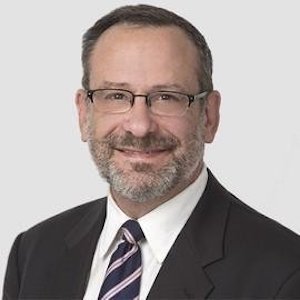In this final installment of my series on the impact of drug-patent abuse on the cost of U.S. healthcare, I will consider one more recently-adjudicated example of a disingenuous attempt at patent-term extension; and then conclude with some overall observations, concerns, and suggestions for the future.
For this last example of drug-patent abuse, let us consider what may be the most-esoteric ploy for patent-term extension in patent-law history: Janssen’s attempt to surgically re-configure the lineage history of U.S. Patent No. 6,284,471(“the ‘471 patent”), to avoid a double-patenting rejection.
The ‘471 patent covers Remicade, an antibody biologic drug for the treatment of autoimmune diseases, including arthritis and Crohn’s disease. It is marketed in the U.S. by Johnson & Johnson, with annual sales of around $4 billion.
Janssen had constructed a patent thicket around Remicade through a set of intricate patent filings, whose relationships only a true patent-law guru could understand, let-alone appreciate.
In its earliest application, filed in 1993, the patent examiner issued a 5-way restriction requirement, dividing up the claims in the application into groups—antibodies for treatment of autoimmune diseases (Group I) and methods of treatment for autoimmune diseases using antibodies (Group IV) being the relevant ones here—representing separately-patentable aspects of the disclosed invention.
Also known as a “requirement for division,” this meant that Janssen had to pick one of the five groups for examination, and would have to file a “divisional,” sister-application for each of the other groups of claims it wished to prosecute for additional patenting. Each divisional application would have the same, earliest filing date as the original application.
Rather than file divisional applications, however, Janssen abandoned the earliest application in 1994, in favor of prosecuting a series of “continuation-in-part” (CIP) applications, which added new subject matter. One of those was a CIP application that also combined subject matter from a different, earlier application, and eventually issued as the ‘471 patent. The ‘471 patent’s application, in turn, was further branched into still more applications that eventually issued as more than 30 additional patents.
Claims to new subject matter in CIP applications are assessed for patentability as of their later filing date. Therefore, if patentable, they may-well expire at a later date than the original patent or any sister patents that issue from divisional applications, which do not disclose or claim the new subject matter, and which were filed at an earlier date.
Of course, CIP applications that in turn support a large family of other applications for their later disclosure cannot be expected to have or support claims that expire at a later date because of their later disclosure, but only disclose subject matter from, and accordingly claim priority to, the earliest filing date. That, would be burning the patent candle from both ends.
But that, is essentially what Janssen attempted to do. When the ‘471 patent was subject to a third-party reexamination in 2013, the examiner rejected the claims under the doctrine of obviousness-type double patenting, over two other patents that were different CIPs of the earliest, common application between all of them. In response, Janssen carved out the new matter and attempted to back-fashion the CIP into a divisional of the original, earliest-filed application, which it had long-ago (in 1994) abandoned in favor of its frenzy of CIP filings.
By doing so, Janssen had hoped to escape the double-patenting rejection, by recourse to the so-called “safe-harbor” provision of 35 U.S.C. §121. This is because under Section 121, the PTO cannot say that on the one hand, the claims are patentably distinct (and therefore restricted), and later reject the claims for double patenting because they are not patentably distinct.
Fortunately, the PTAB recognized that what Janssen could not do, was use the early filing date of the original application to support a later-expiring patent, especially when the later subject matter was relied on for priority by an entire family of patents, which would all have to be then-subject to re-examination to try and make sense of the whole thing, merely in response to Janssen’s deliberate decision to file CIPs instead of divisionals, more than 20 years ago. In January 2018, the Federal Circuit agreed with the PTAB, and affirmed the invalidity of the ‘471 patent on double patenting grounds.
*****
The Non-Trivial Abuse of Patent Esoterica
The four examples presented in this series on unjustified attempts at artificial patent-term extensions—for the Humira, AndroGel, Restasis, and Remicade franchises, respectively—are not just outliers. These examples were all the subject of adjudications decided within the past year, alone. They do not reflect a “myth” of trivial follow-on drug patents, as one author has recently argued—but, on the contrary, force us to contend with a very real, existing problem.
Indeed, the very notion of threading through esoteric legal loopholes to artificially extend patent term in order to maintain market exclusivity has long-been called “evergreening.” I am not particularly fond of the term, because it just seems to put lipstick on a pig. A better term might be “fake patent turf,” or what is more to the point, “patent abuse.”
Respected legal scholar, Professor Robin Feldman of the University of California, Hastings College of the Law, has written extensively about the practice. In her recently-published empirical study, “May Your Drug Price Be Ever Green,” she and her student analyzed patents listed in the FDA’s Orange Book during each of the years 2005-2015. They found that “at least 74% of the drugs associated with new patents in the FDA’s records were not new drugs coming on the market, but existing drugs,” and that “alarmingly, the problem has gotten worse over time.” And she further has noted in “Drug Wars: A New Generation of Generic Pharmaceutical Delay,” that in setting the levers of public policy such as the Hatch-Waxman Act does, “One cannot expect the rats in the maze to run in the direction society operates, if the cheese is poorly located.” (At 503.)
The Hatch-Waxman Act and the Biologic Price Competition and Innovation Act are both forged from a noble ideal, grounded in a commitment to a robust and earnest patent system that rewards real innovation. The cheese should not be trapped in a cat-and-mouse game that uses administrative procedure and judicial process for what could aptly be described as patent-term embezzlement for the purpose of patent-forced extortion from the coffers of the American public.
By the power vested in them by specially-reserved patent laws, drug patents are a patent species of their own universe. They can have the economic power of nuclear warheads, in an industry built on an exclusivity model worth hundreds of billions of dollars, per year. We simply cannot afford to fill the silos of those warheads with patent waste that does not innovate or improve upon anything, but which can wreak economic and social havoc, while feeding the general public’s perception that all patents stink.
C’mon, people. As members of the patent bar, we should all try our best, as Justice Brandeis might say, to be counsel to the situation here, and urge both our clients and our adversaries to be reasonable, and to act in good faith. We should come down hard on the false profits, intellectual dishonesty, and social injustices that result from issuing drug patents on the basis of little or no evidence of real innovation, and enabling their wrongful enforcement in bad faith, without severe punishment. In any civilized society, reasonable people should look at drug-patent abuse with disdain, and at efforts to maintain fake-free patent turf in the drug-patent space as a critical outcome, for everyone.
Image Source: Deposit Photos.

![[IPWatchdog Logo]](https://ipwatchdog.com/wp-content/themes/IPWatchdog%20-%202023/assets/images/temp/logo-small@2x.png)


![[Advertisement]](https://ipwatchdog.com/wp-content/uploads/2024/04/Artificial-Intelligence-2024-REPLAY-sidebar-700x500-corrected.jpg)
![[Advertisement]](https://ipwatchdog.com/wp-content/uploads/2024/04/Patent-Litigation-Masters-2024-sidebar-700x500-1.jpg)

![[Advertisement]](https://ipwatchdog.com/wp-content/uploads/2021/12/WEBINAR-336-x-280-px.png)
![[Advertisement]](https://ipwatchdog.com/wp-content/uploads/2021/12/2021-Patent-Practice-on-Demand-recorded-Feb-2021-336-x-280.jpg)
![[Advertisement]](https://ipwatchdog.com/wp-content/uploads/2021/12/Ad-4-The-Invent-Patent-System™.png)






Join the Discussion
One comment so far.
Anon
July 13, 2018 11:02 amYour Ends are noble – but your “means” continue to be of questionable import.
For example, you seem here to merely assume that the “dance” surrounding the “Restriction/Continuation In Part” choices somehow must have been due to nefarious actions.
As you admit: “Janssen had constructed a patent thicket around Remicade through a set of intricate patent filings, whose relationships only a true patent-law guru could understand, let-alone appreciate.”
Building a patent thicket is a perfectly legal, moral and blameless activity. You may not “like” it. You may “feel” that such should not be allowed, but your feelings do not control.
So while I agree fully with the nobility of your stated desired ends – in the abstract; I do not “buy” your means of getting there.
And trust me, I am one that has often been critical of Big Pharma, so this is not merely a “I do not agree with you” type of comment!